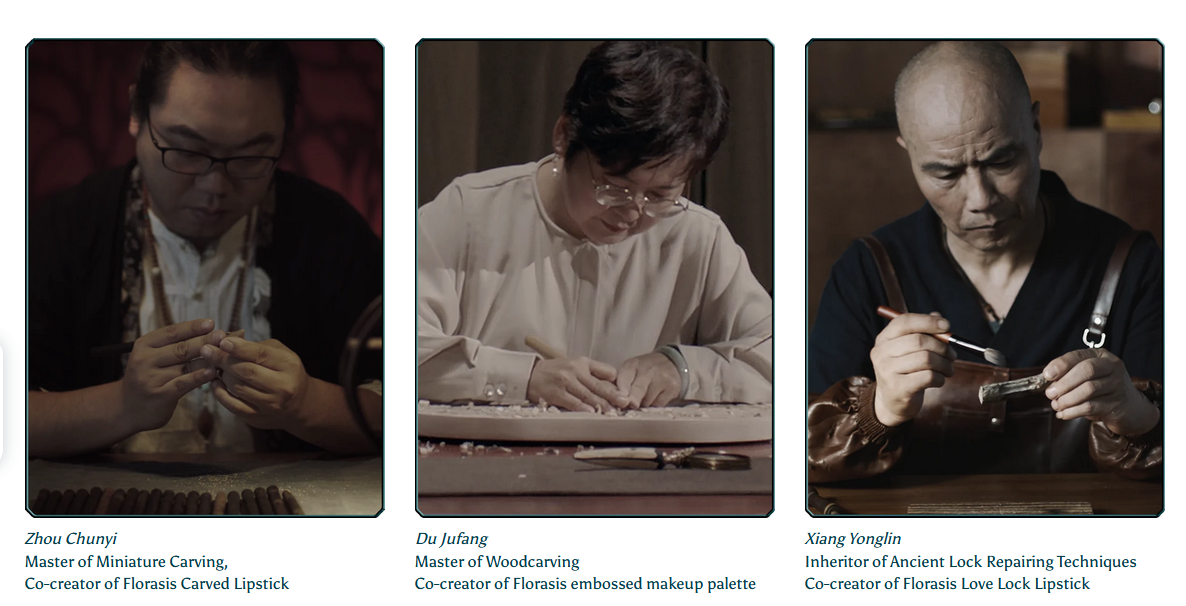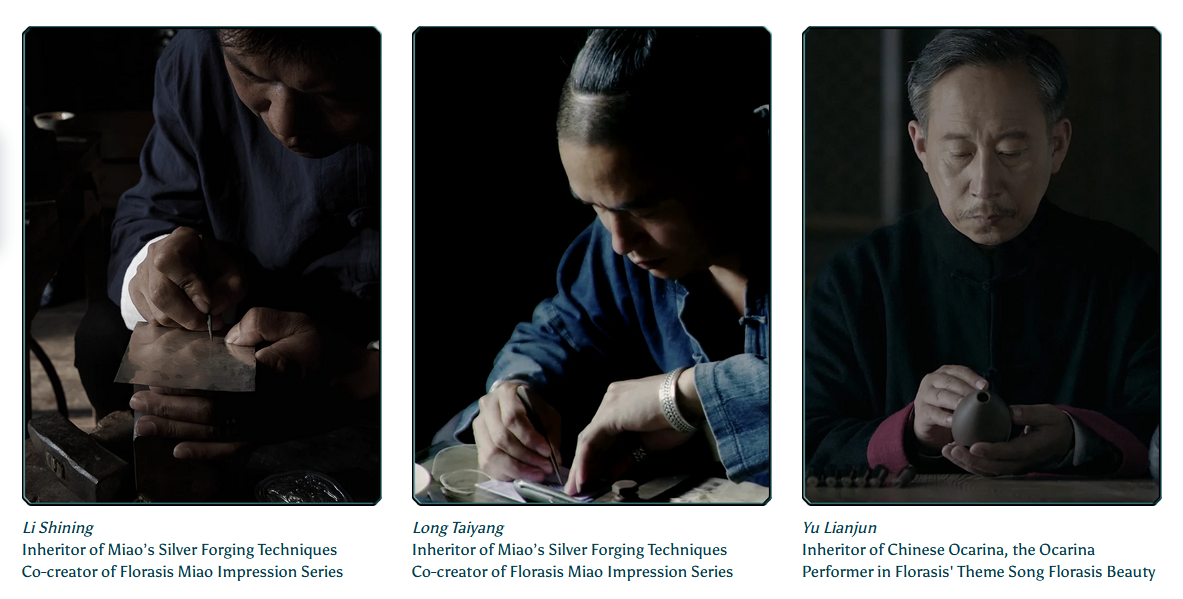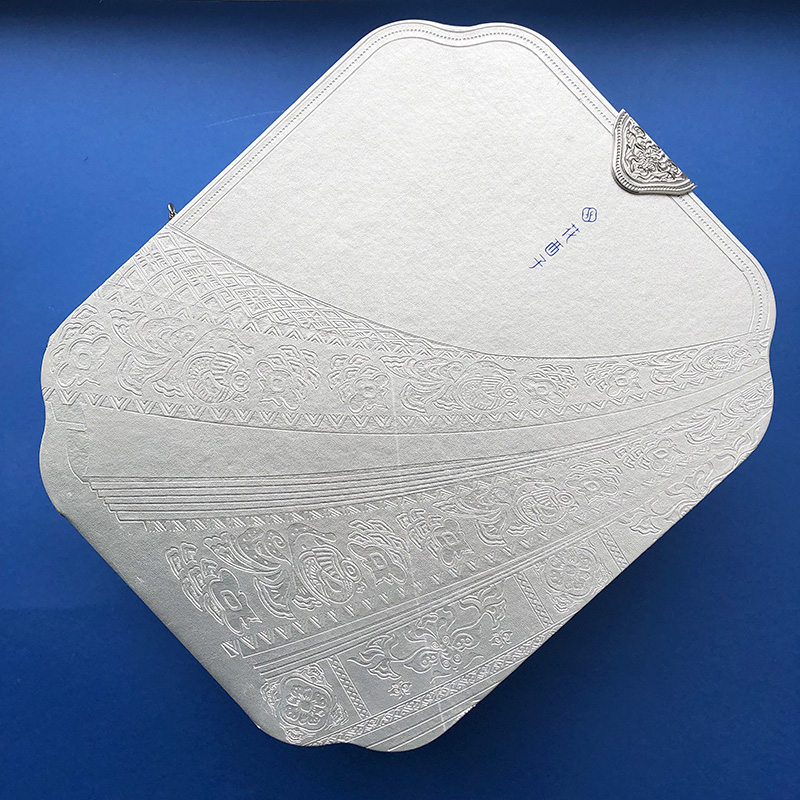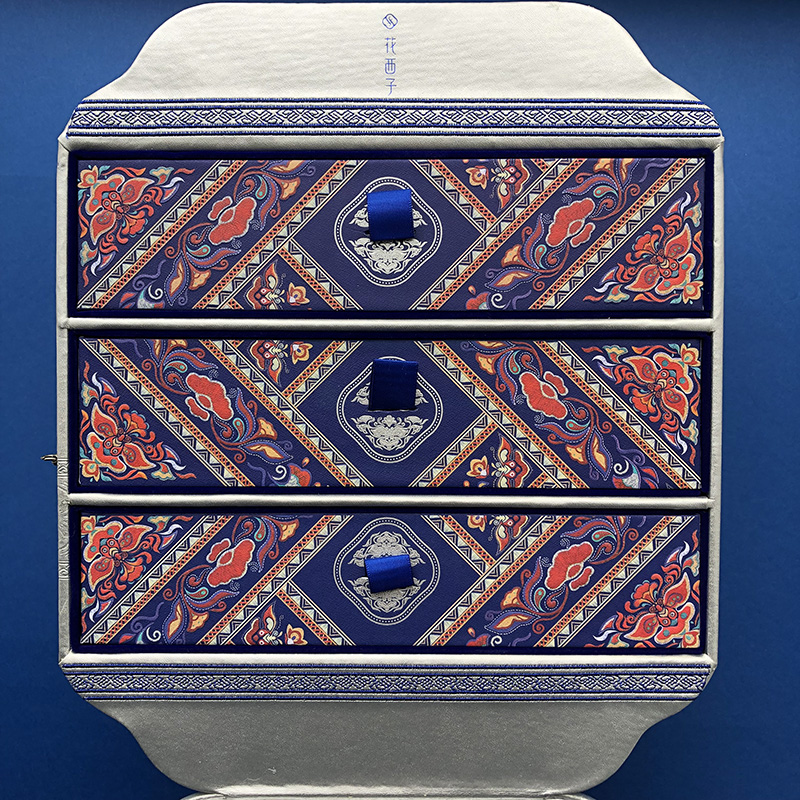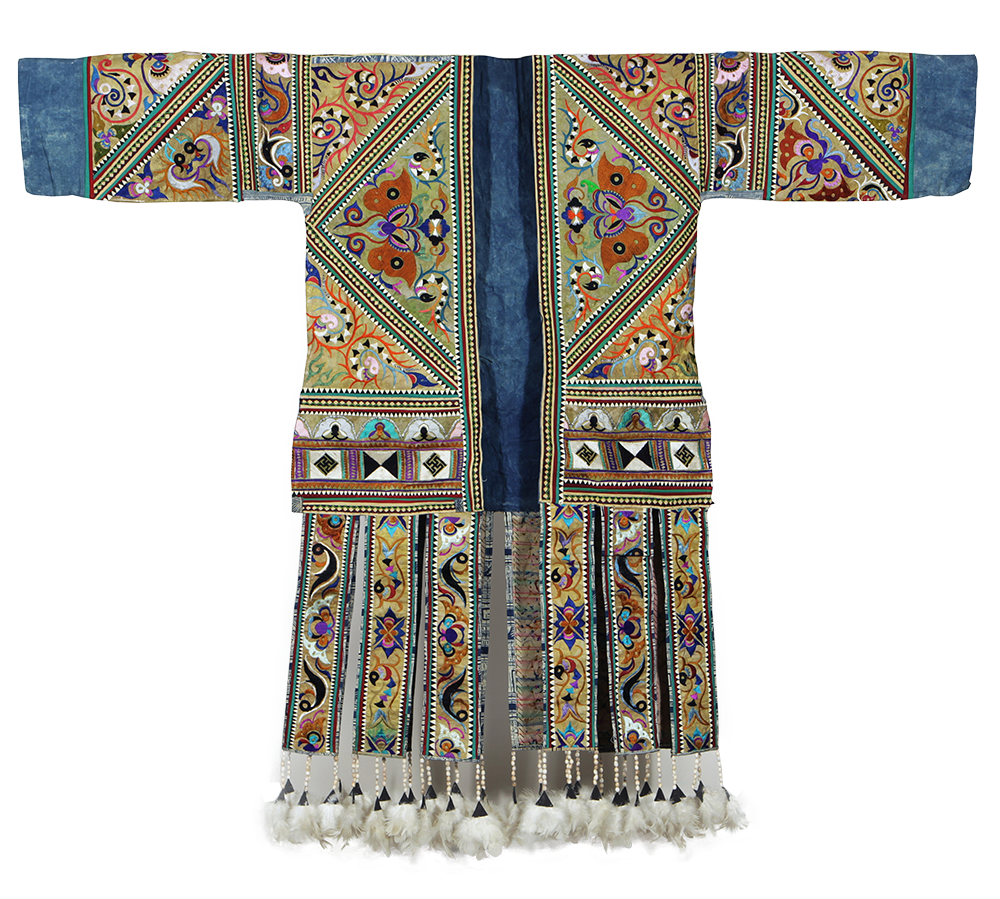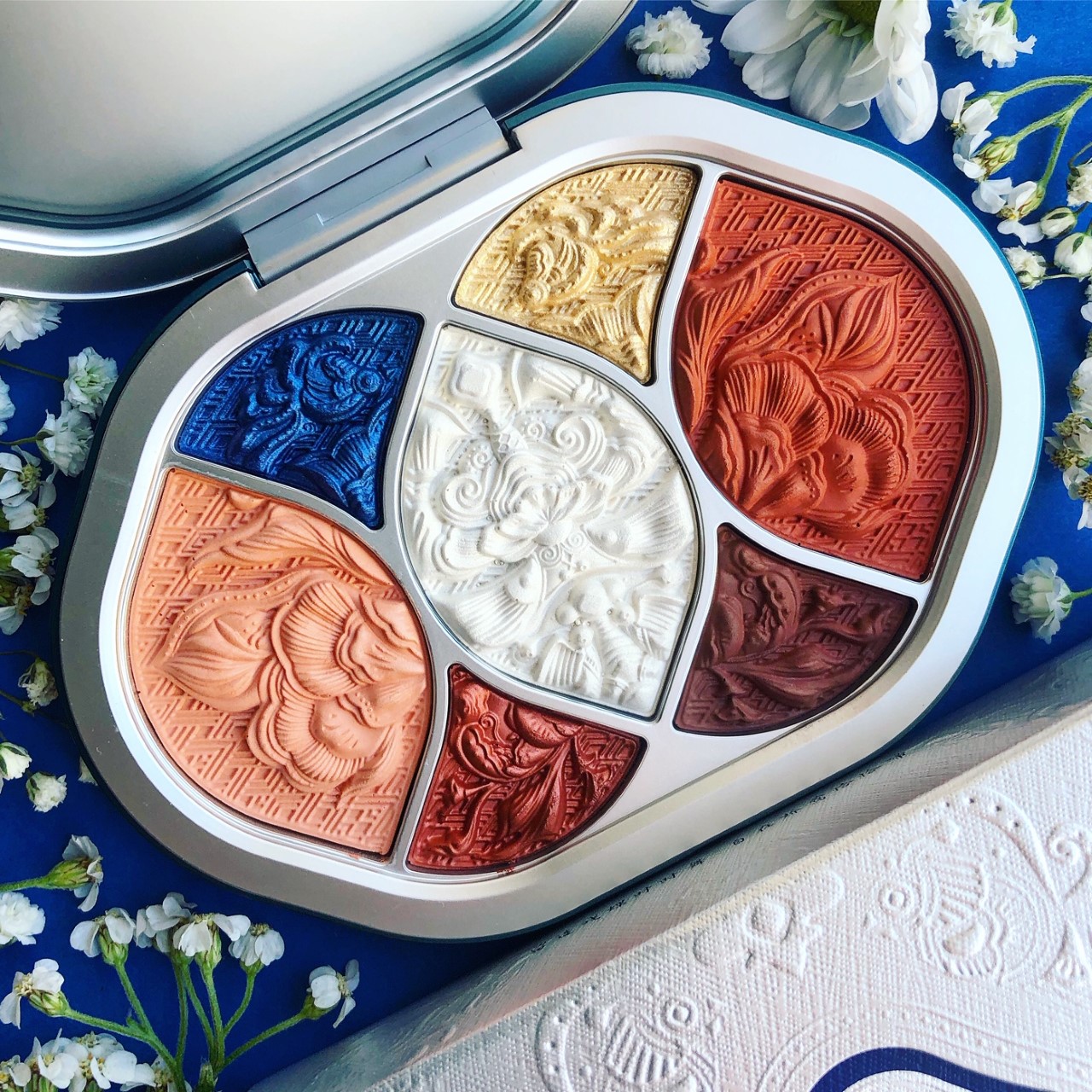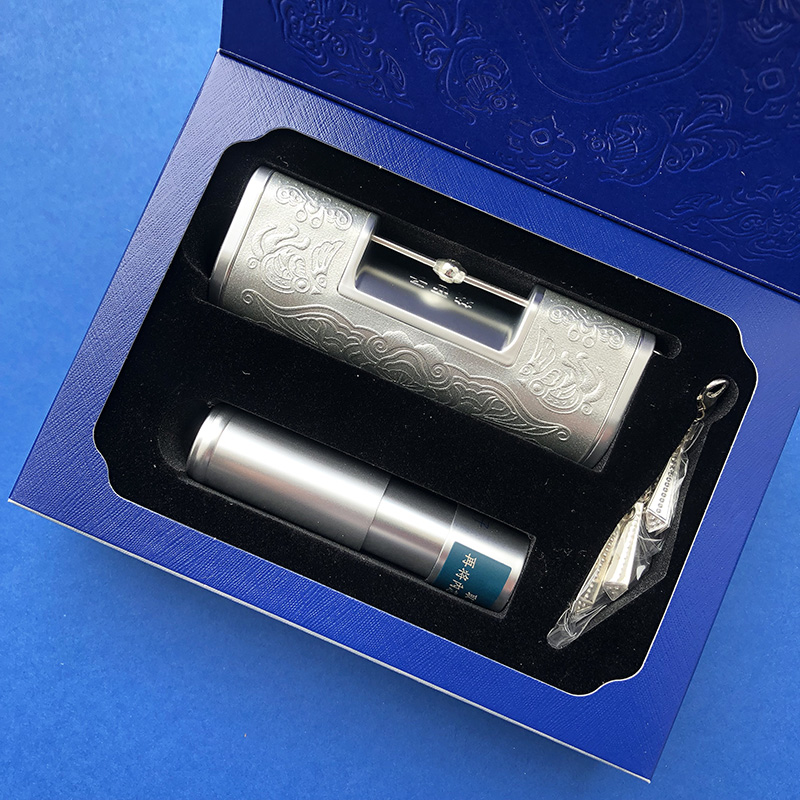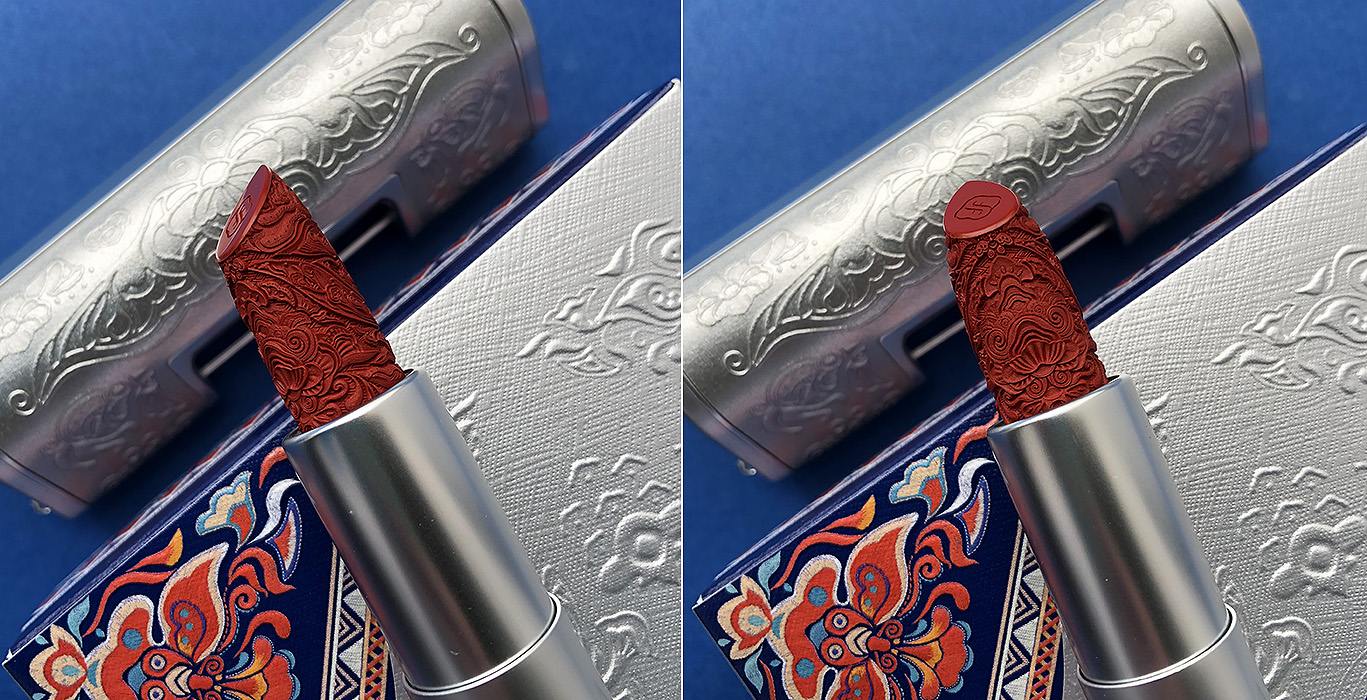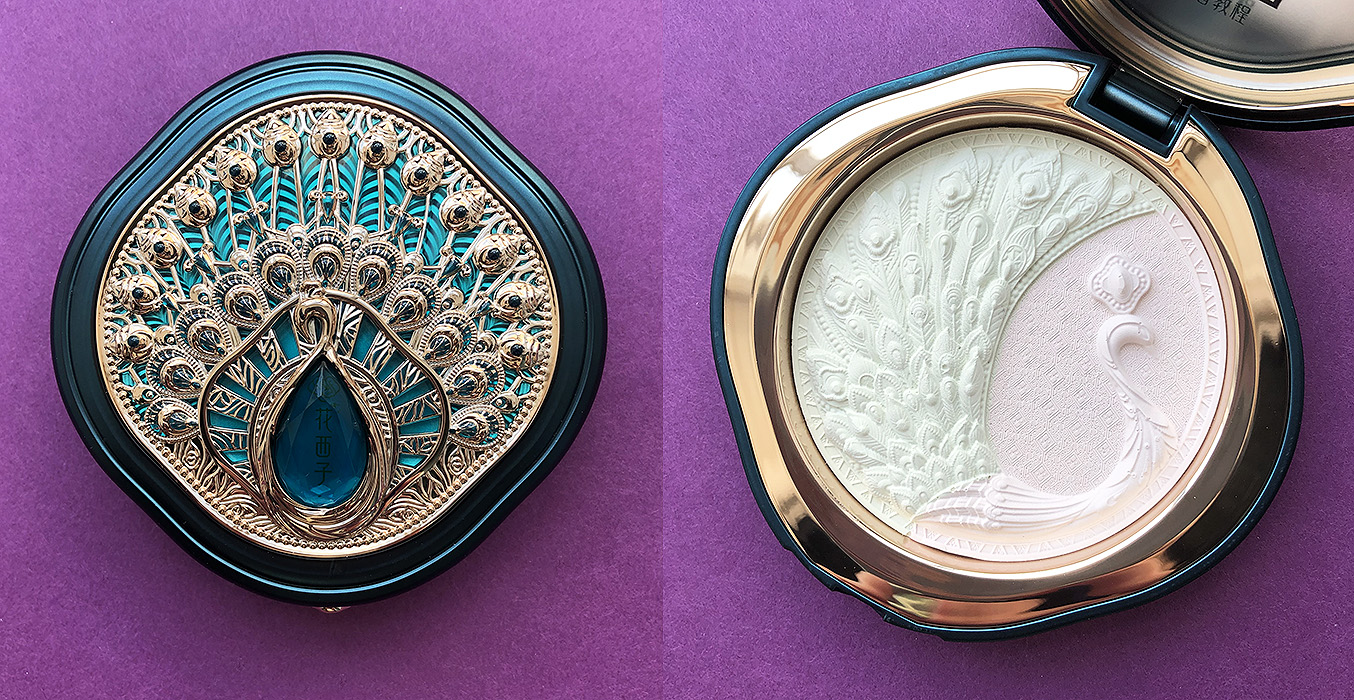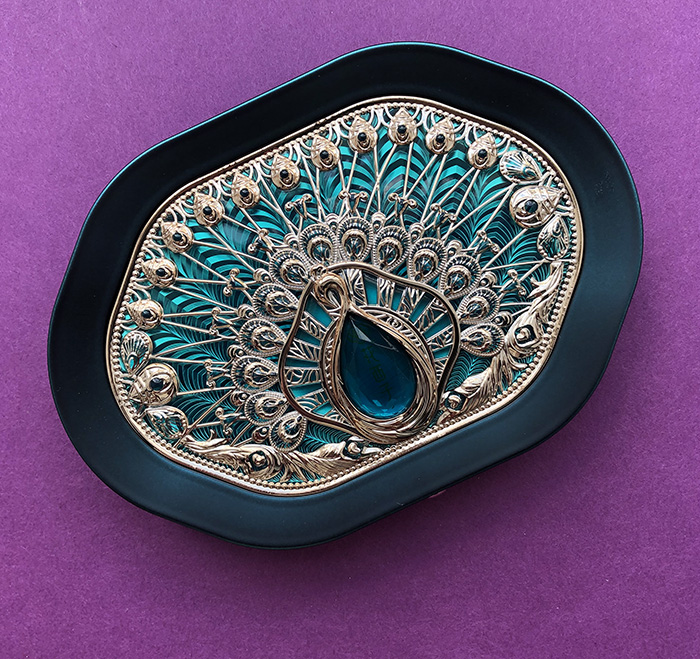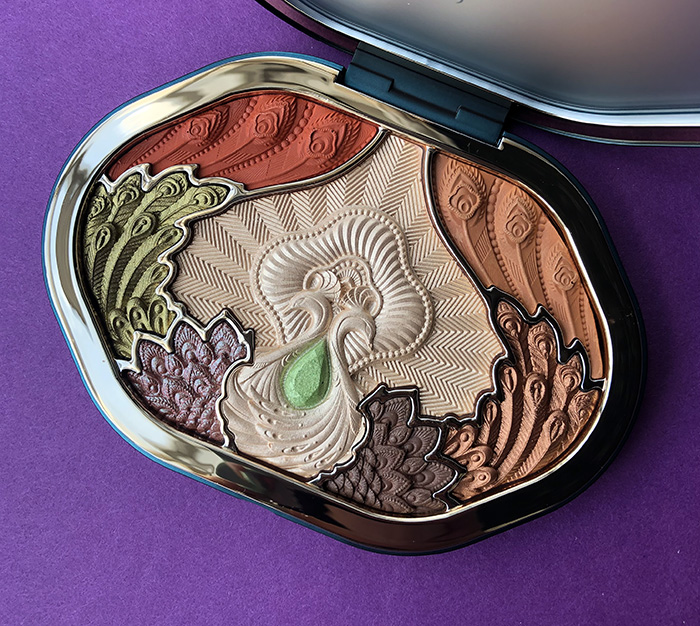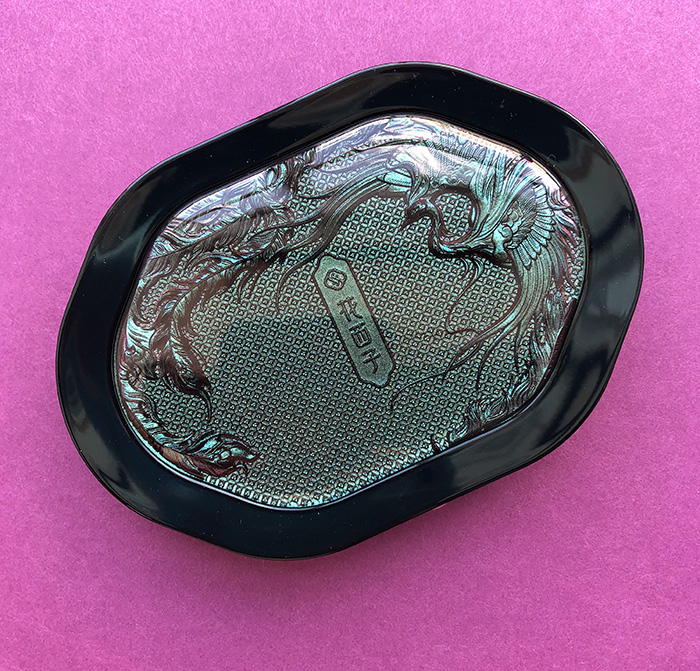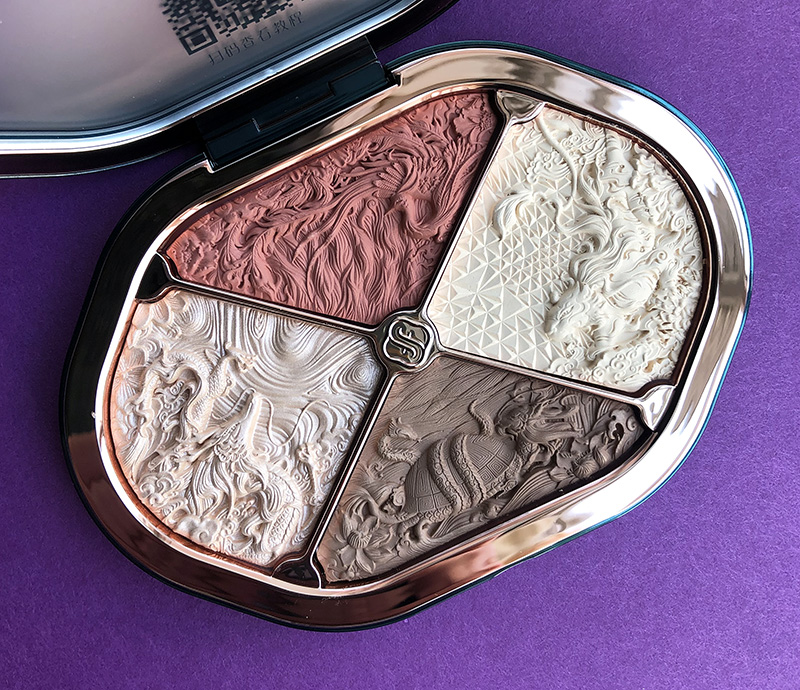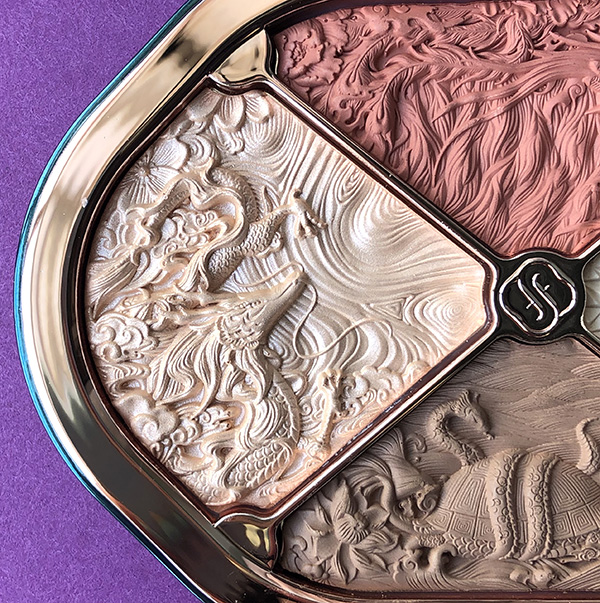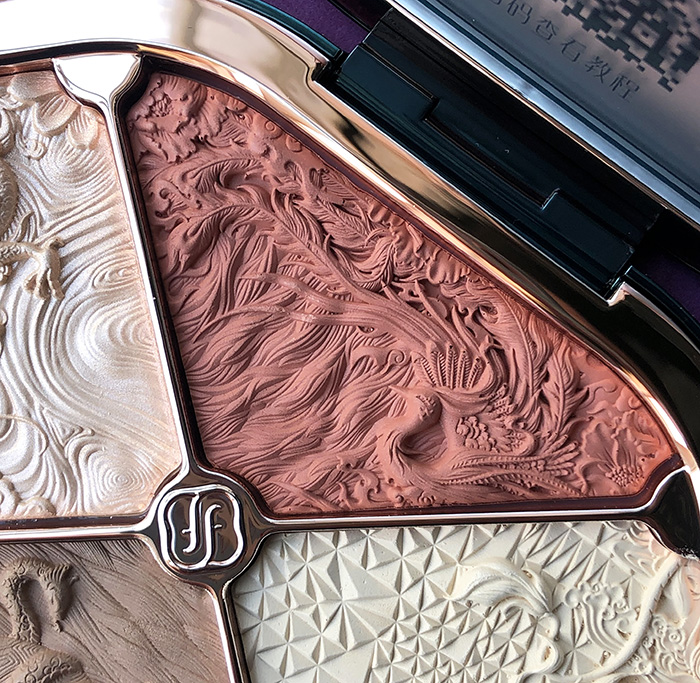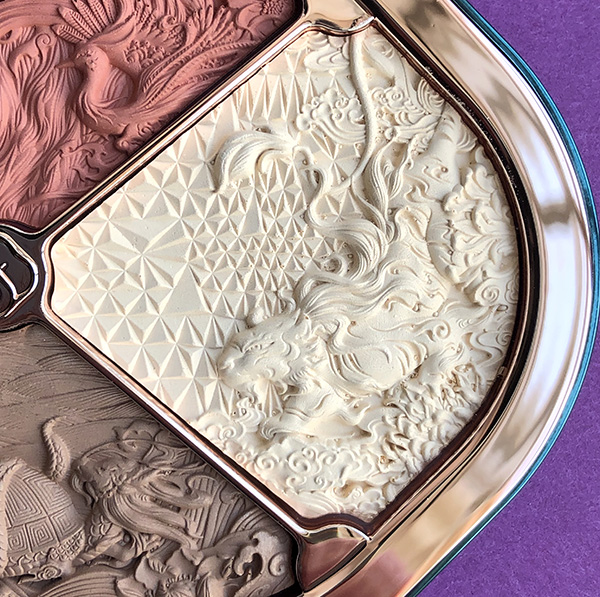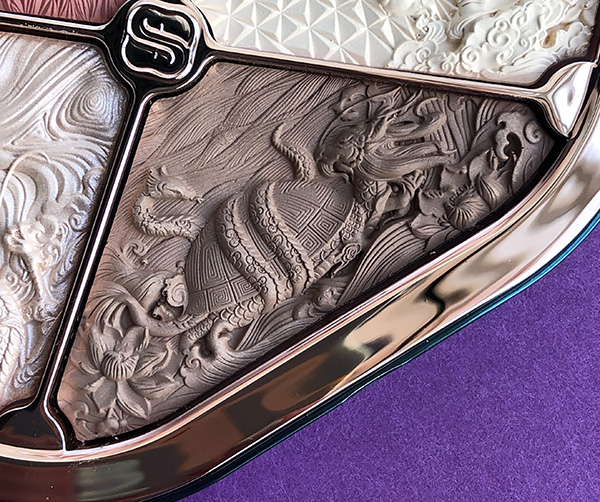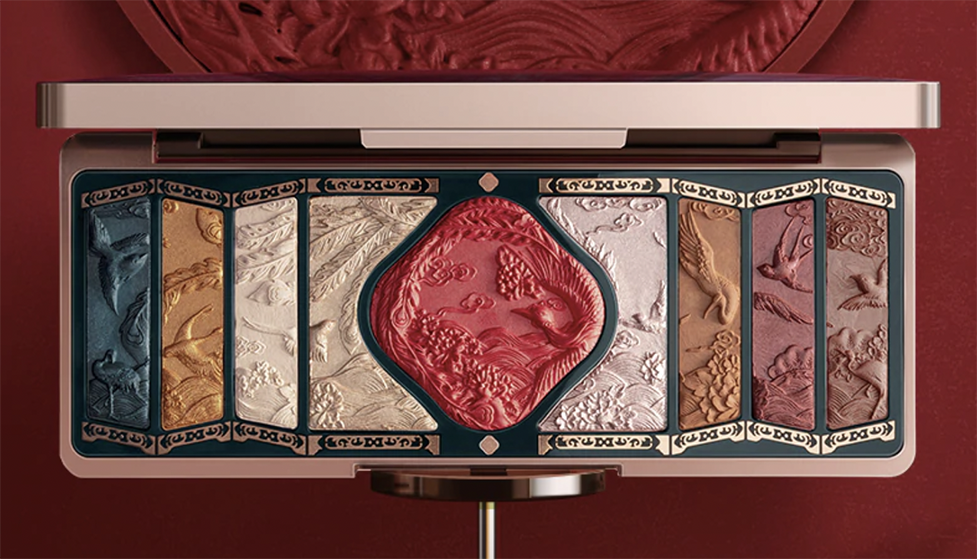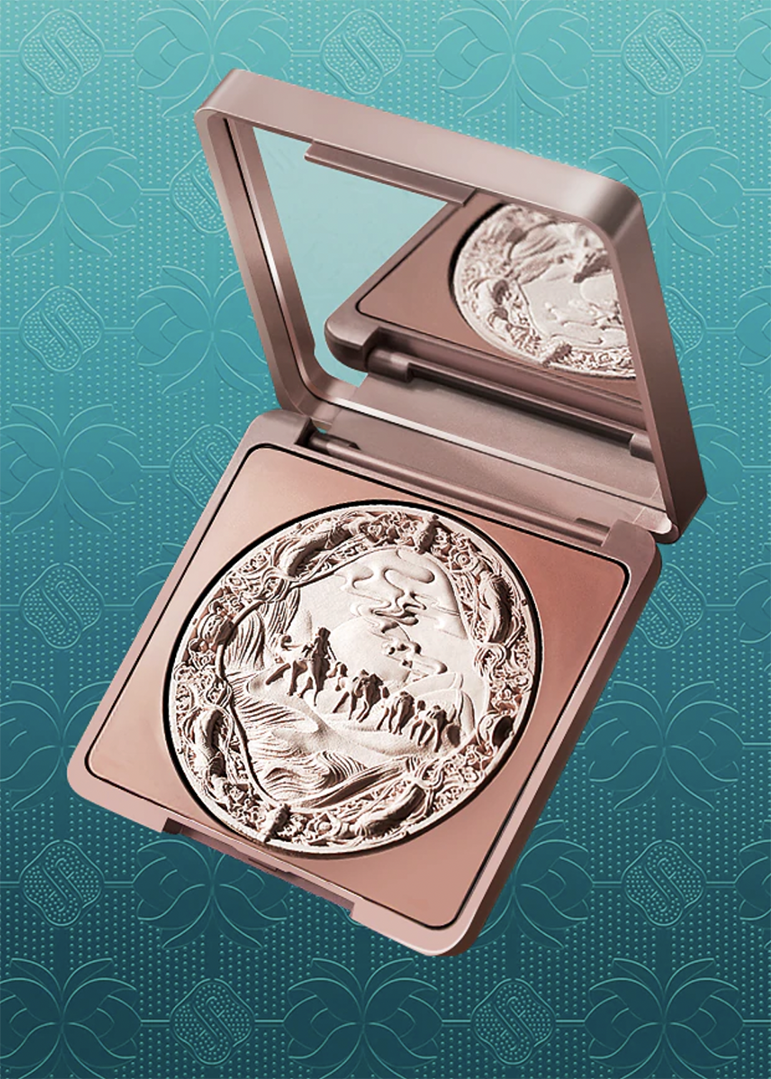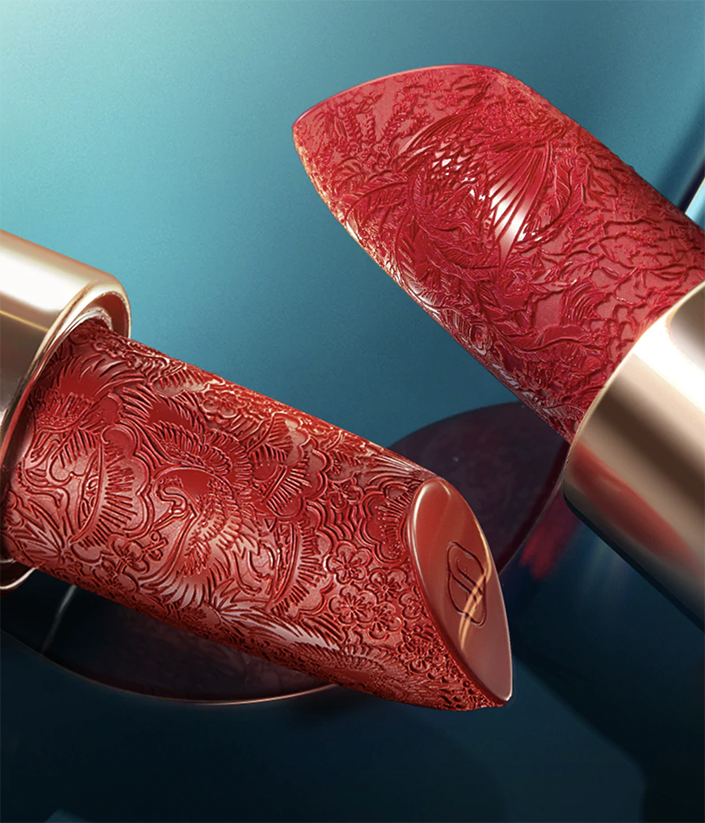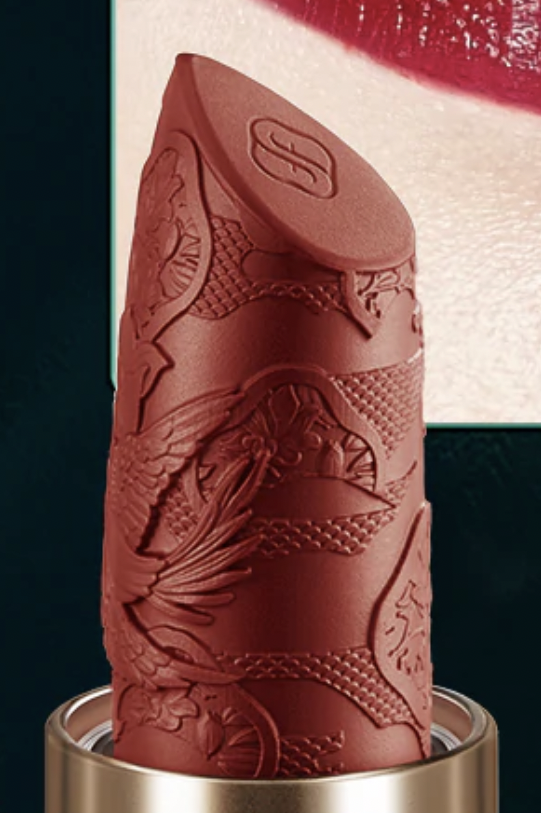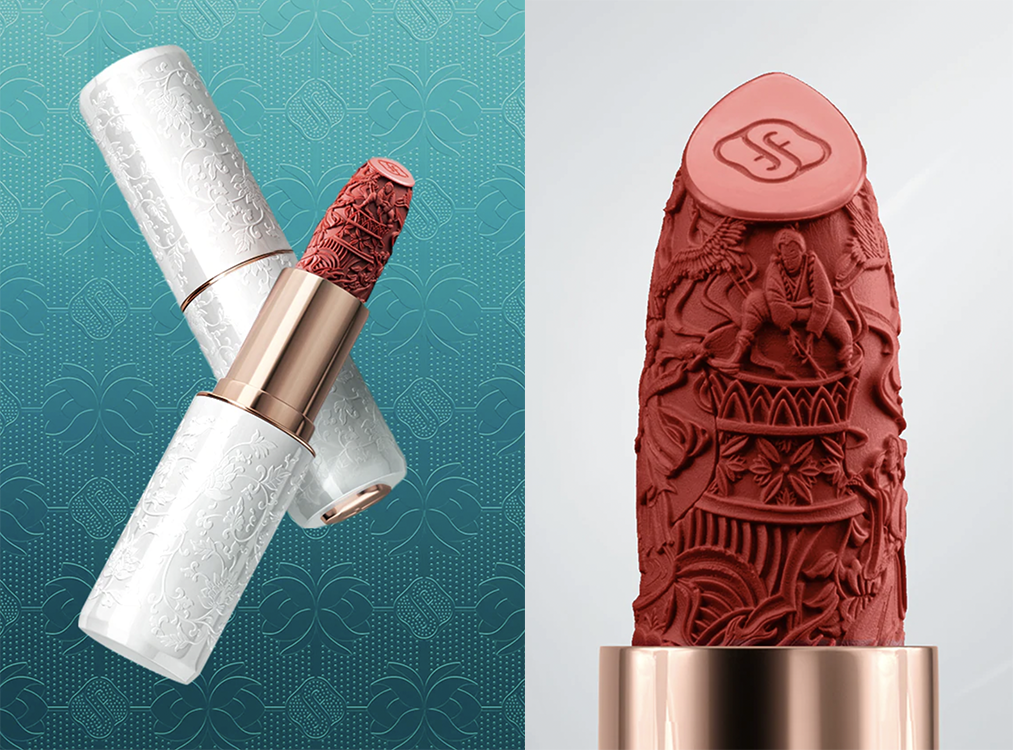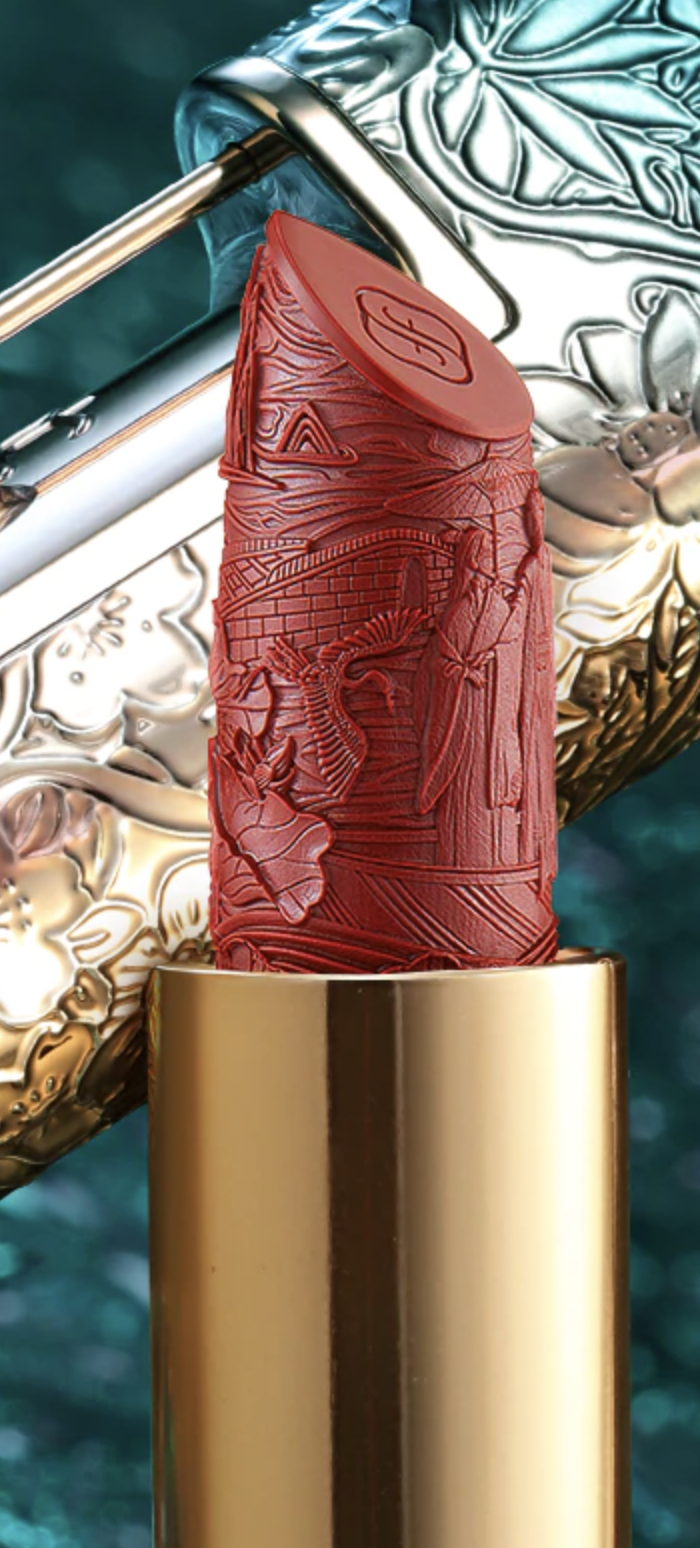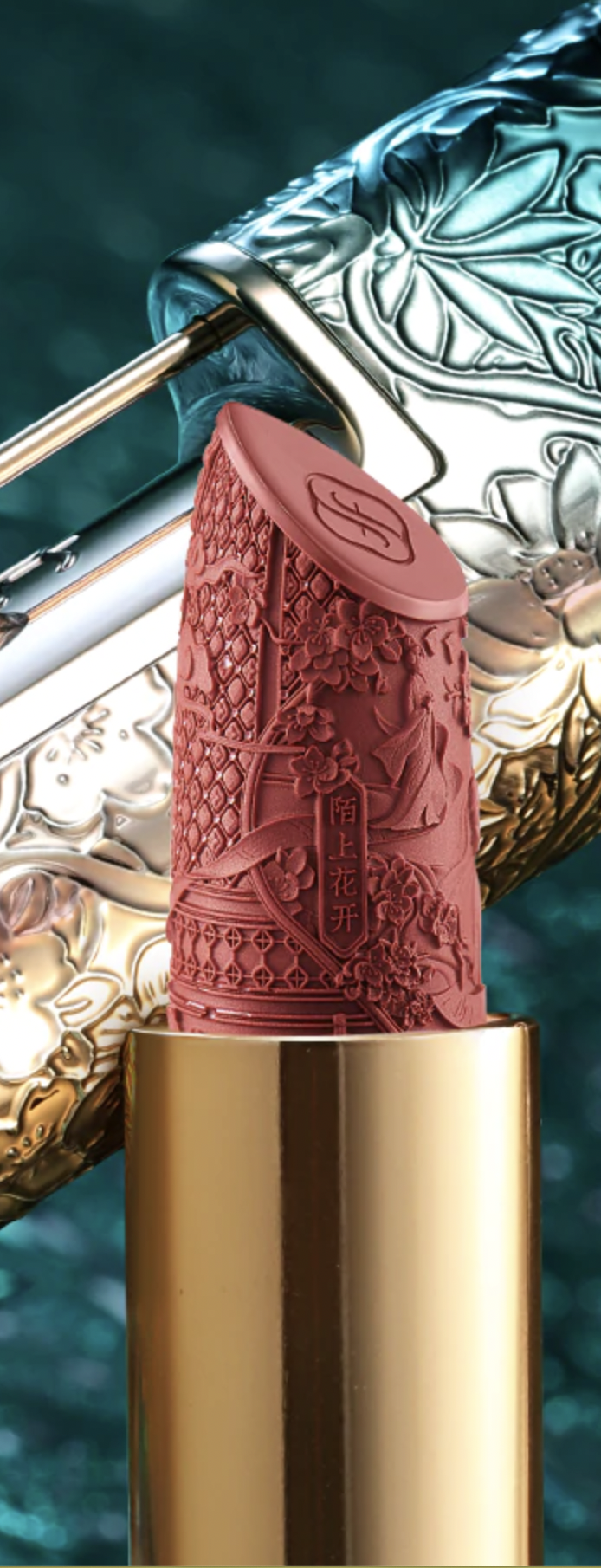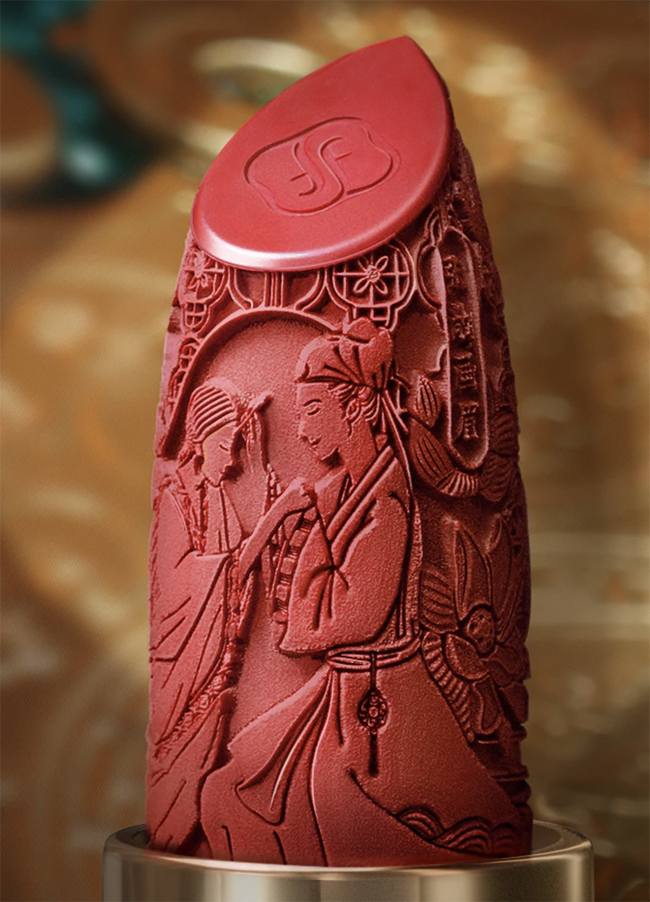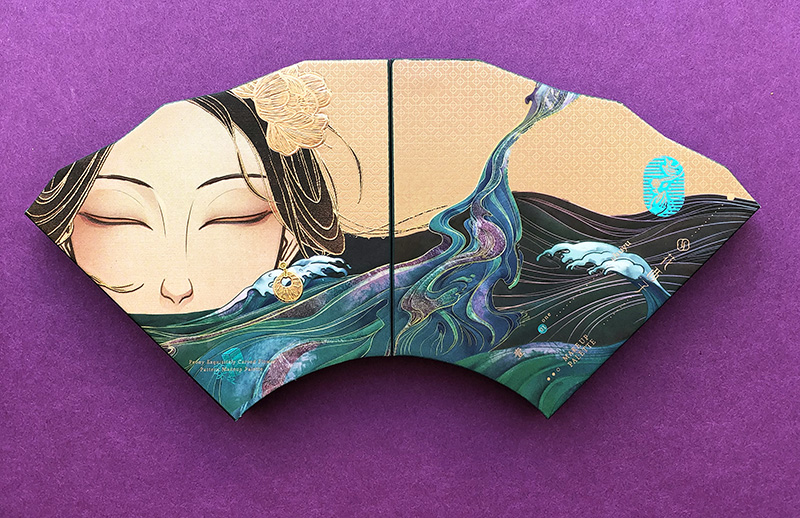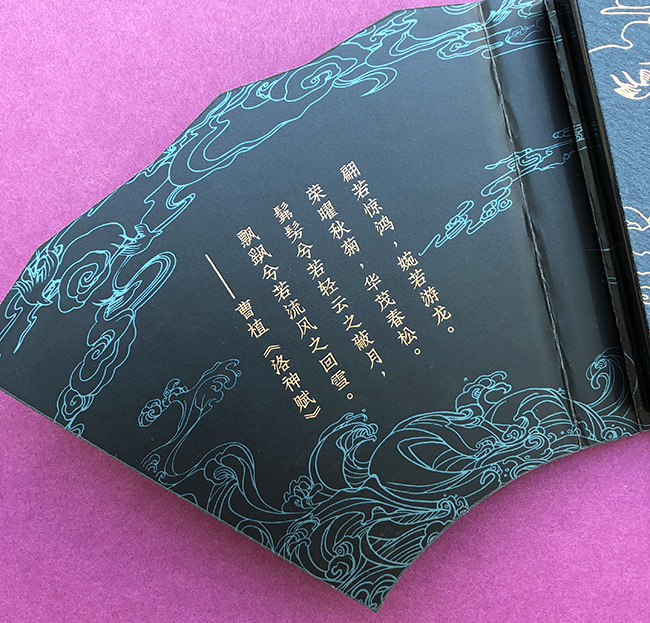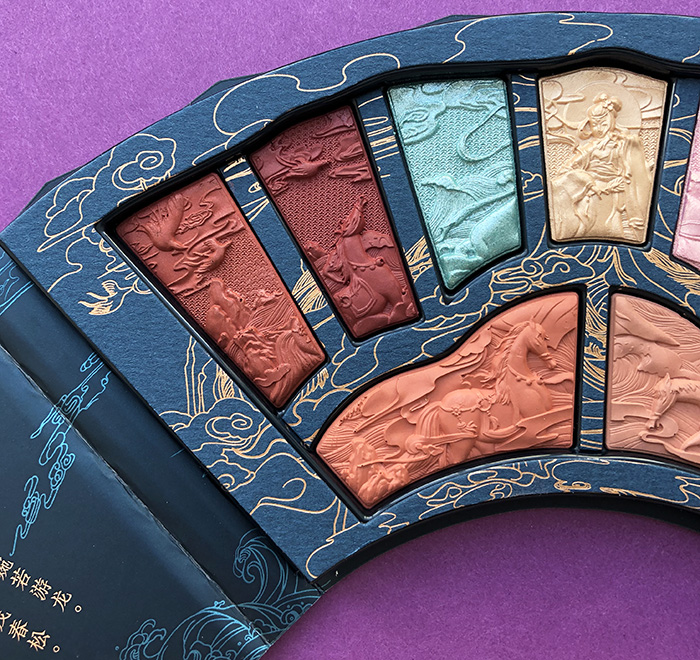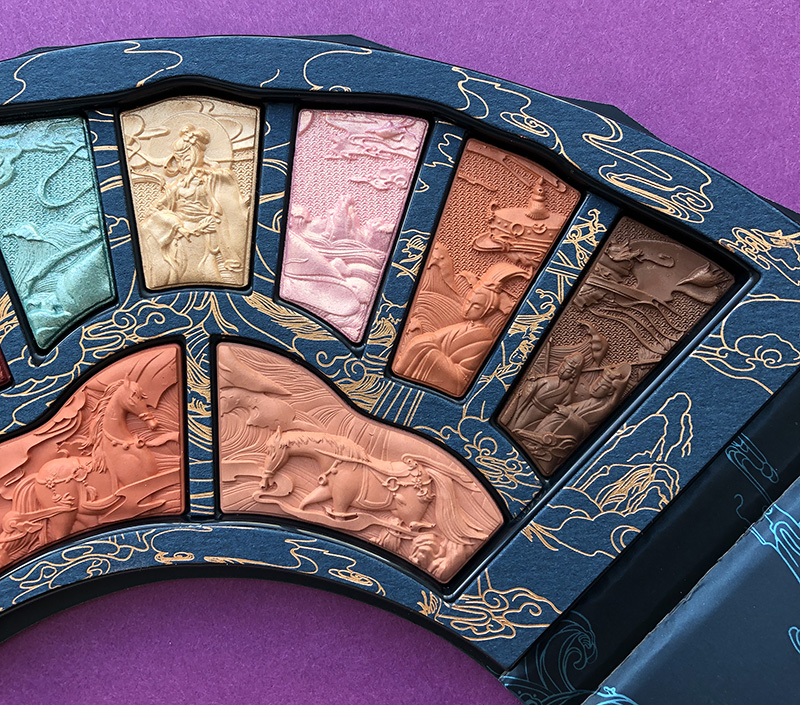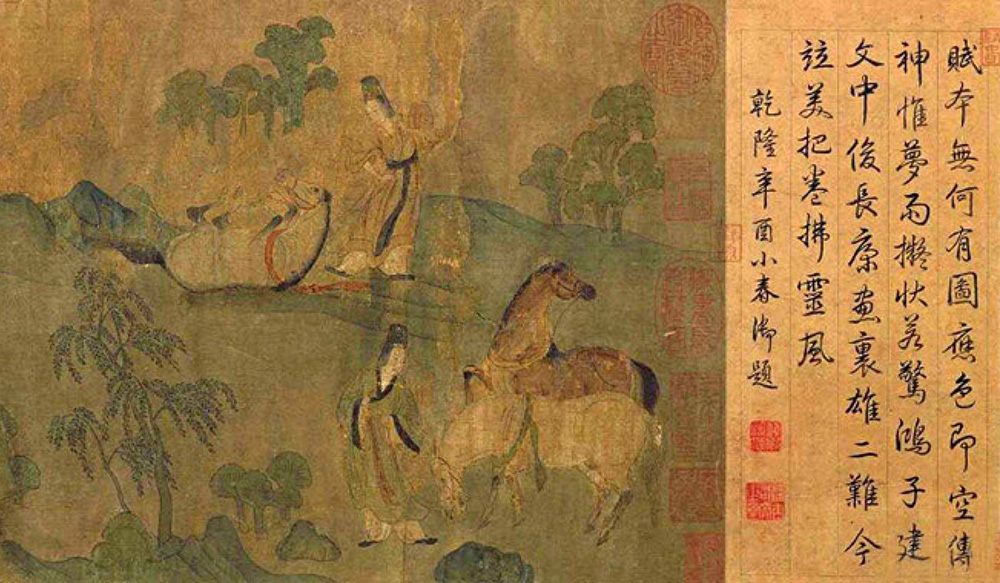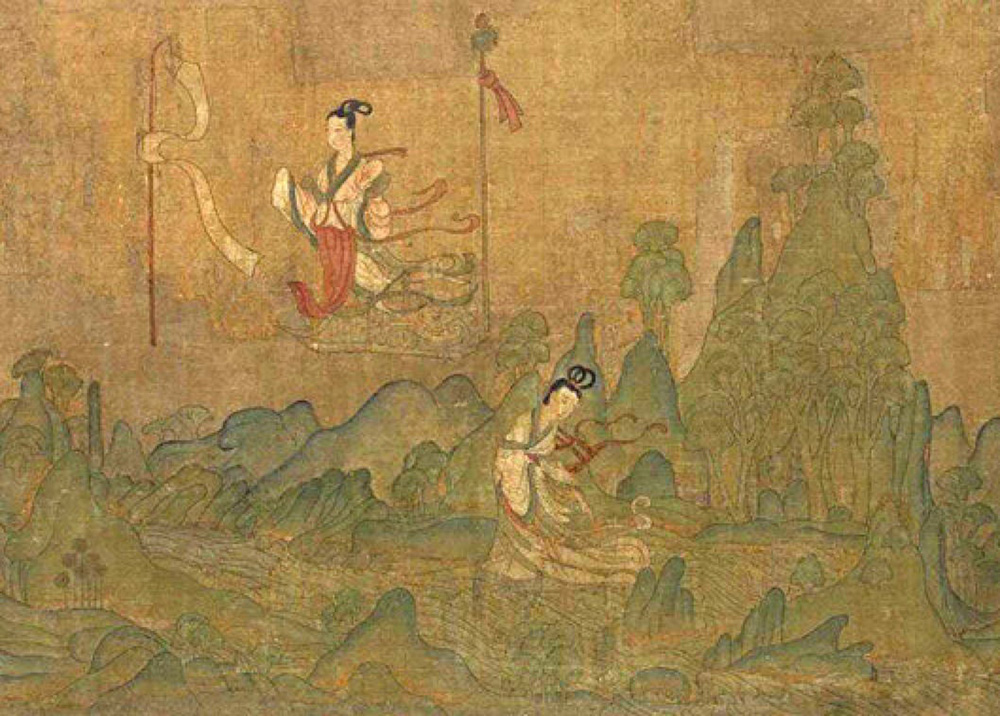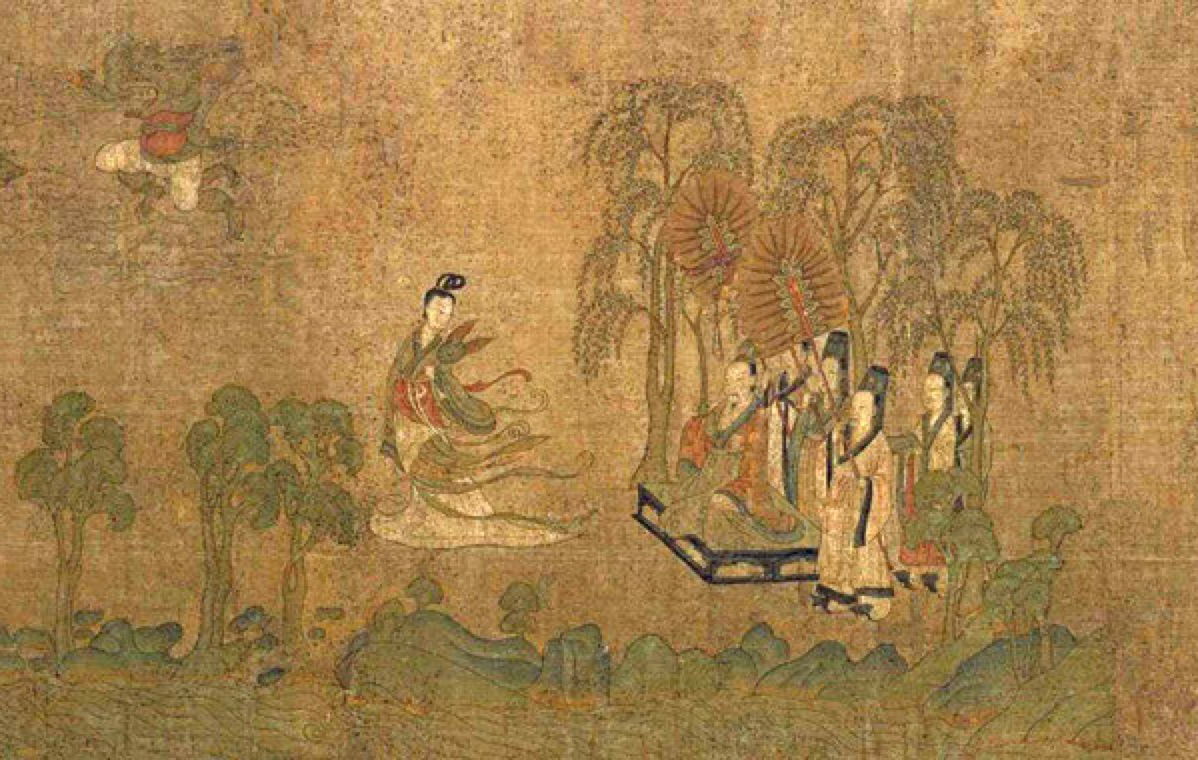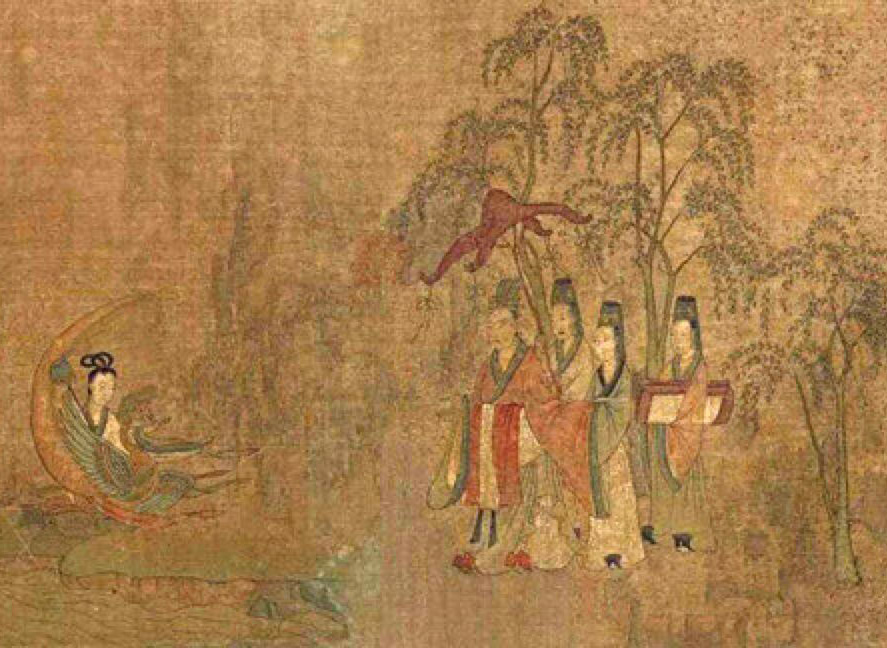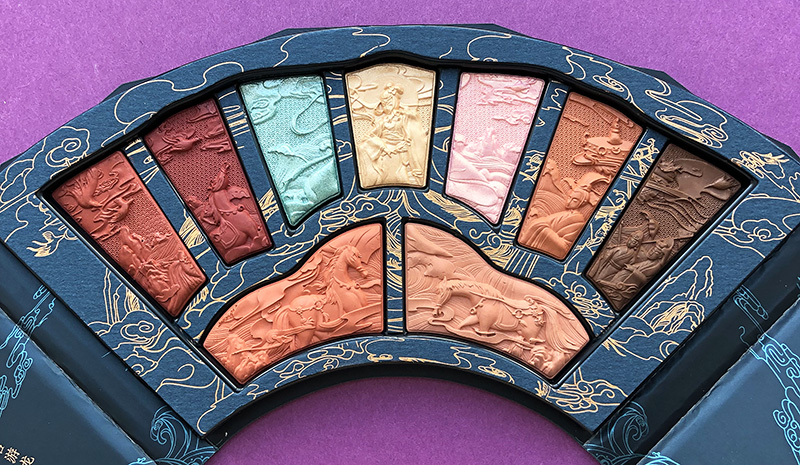Over the past 4 years or so there has been an explosion of new Chinese makeup brands. Parts 2 and 3 of this post will more fully explore the how's and why's of this growth, along with a variety of brands, but in the meantime I wanted to focus on one called Florasis. Florasis (花西子, Huaxizi1) was founded in 2017 and celebrates traditional Chinese beauty and culture. It was certainly a breath of fresh air, since, as we've seen, makeup is rife with cultural appropriation when it comes to China.
What I love about Florasis is the artistry behind their collections. According to their site, the company hired master craftspeople to help design the packaging.
There are quite a few collections inspired by various aspects of Chinese culture, so I'll be presenting very brief summaries of each as detailed histories are far beyond this post – they could be (and some are) entire books!
First up is the Miao collection that was released in late 2020. The collection celebrates the silver work and embroidery that have been centuries-old traditions of the Miao people, one of 56 officially recognized ethnic minorities in China.
These two necklaces are at the Bowers Museum, whose guide to their Masters of Silver exhibition provides a good summary of Miao silver artistry: "Male silversmiths create a variety of ornaments through casting, smelting, repoussé (a reverse hammering technique), forging, engraving, knitting, coiling, cutting, and other methods. Concepts such as beauty, unity, fortune, and pride are expressed as visual abstractions and geometric motifs. Silver itself is symbolic of light, the moon, fertility, and protection against evil, but it also represents a woman’s wealth and plays a role in courtship. Families spare no expense in adorning their daughters, purchasing additional pieces as they are able. Worn mostly in large festivals, the headdresses, combs, earrings, necklaces, breastplates, bracelets, rings, ornaments, and the counterweights on display here can weigh up to twenty pounds. The fine work aims to attract suitors who look at each garment as measures of the wearer’s qualities. In marriage, silver acts a woman’s dowry and is eventually passed down from mother to daughter." The necklace on the right is actually a bridal collar. While the traditions surrounding Miao silverwork reflect a rather sexist patriarchal structure within their culture, some of the craftsmen are using it as a way to lift their community out of poverty and ensure the practice does not go extinct.
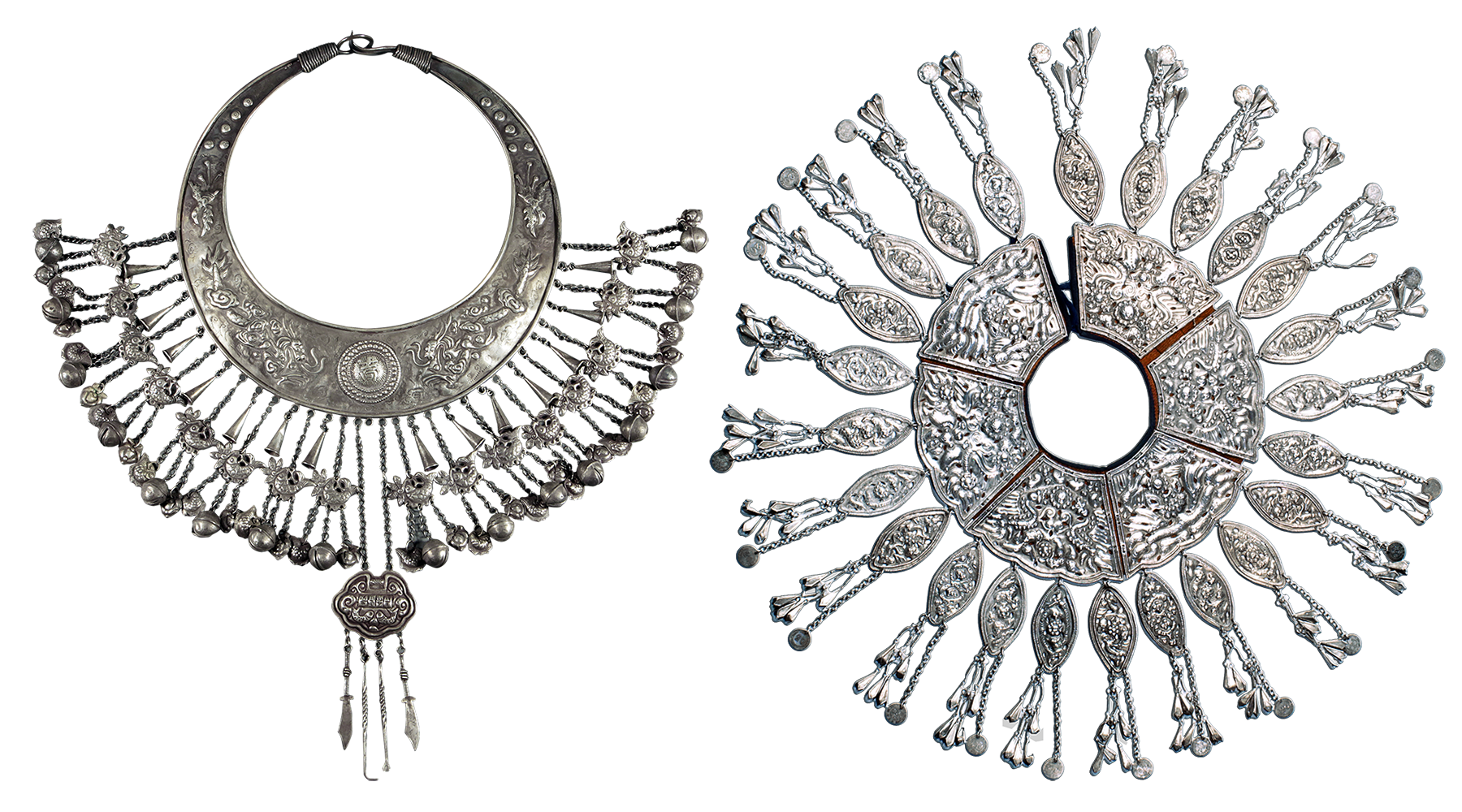 (images from guide.bowers.org)
(images from guide.bowers.org)
The Miao produce intricate embroidered garments in addition to silver jewelry.2 As the National Museum of Asian Art explains, "Because the Miao people do not have their own written language, their embroideries often take the role of documenting their history and culture. Their embroideries reflect their world view, values, history, religions, and the social changes they have experienced over the centuries. Working with silk and cotton thread, as well as with horsehair, embroiderers adorn cuffs, sleeves, collars, and tunic fronts with designs of mythical animals (dragons and phoenixes) and ordinary insects, fish, and flowers. Vibrant colors—such as scarlet, pink, purple, dark blue, and bottle green—are frequently used." The box set from Florasis opens to reveal three drawers adorned with patterns in the style of Miao embroidery.
This beautiful example is also from the Bowers Museum. The butterfly is a common motif in Miao embroidery, as part of their folklore centers on the tale of the "Butterfly Mother" from which all Miao people have descended. The legend says that the Butterfly Mother laid 12 eggs, one of which hatched to become the Miao people, and the rest hatched into other earthly creatures so that the Miao would not be lonely.
Florasis named their Miao palette the Butterfly palette and claim the pattern consists of butterflies, although I can't say I see any. It looks more like a floral design to my eye.
Next up is the Impression of Dai collection, which also uses the art and traditions of another ethnic minority in China, the Dai people. According to this site, "the Dai are closely related to both the Lao and Thai peoples, having a closely intertwined history and a relatively close geographical position. There are over one million Dai living in China, primarily in the southern Yunnan province."
For the Dai, peacocks symbolize "beauty and peace, and are said to be a good omen." In fact, peacocks are so significant in Dai culture that they created a whole dance! This traditional folk dance goes back thousands of years and mimics the bird's graceful movements. In 2006, along with Miao embroidery, it was added to China's national intangible heritage list. Also, if you look closely at the background of the ivory side of the powder, there's a gorgeous embossed pattern. The Florasis site states that the collection was inspired by Dai brocade. Once again, there are entire papers written about Dai brocade so I can't go into much detail and I couldn't really find a brocade that resembled the pattern, but it definitely looks like fabric.
For some reason I completely spaced on getting the Impression of Dai lipstick. I think I thought I had purchased it and then realized I forgot when the package arrived. Ah well, I'll pick it up another time but I need to do it soon as it's limited edition. The lipstick features exquisite carving that's as intricate as the Miao one, but with a peacock motif. The Florasis site indicates that the lipstick formula contains essences of dendrobium nobile (a type of orchid native to southern China) and lotus flower, and claims these ingredients are used by the Dai. I can't find any hard evidence of that claim, but orchids and lotus flowers have been used for centuries in Chinese medicine and cosmetics so it seems plausible.
The Floral Engraving Forest Aura eyeshadow palette is a nod to the Dai people living in Xishuangbanna, a lush rainforest along the border of China, Laos and Myanmar.
Not only does Florasis use artists to design the packaging, for the Dai collection they also worked with Fang Langlang, an artist who recreated the collection using sand.
Next in Florasis's little trove of treasures is the Eastern Beasts face palette. Each section depicts an animal associated with one of the Four Symbols that are based on constellations, also known as the Four Auspicious Beasts (why Florasis is calling the palette Eastern Beasts is not clear).
First is the Green Dragon, representing spring. (I think they may have meant Azure Dragon…maybe they mistranslated azure as green and not blue.)
Then Vermilion Bird, symbolizing summer:
White Tiger, which corresponds to autumn:
Finally, there's the Black Tortoise who represents winter.
While I love the patterns and overall concept, it's driving me a little crazy that the Four Auspicious Beasts are out of order when one considers they are also seen as the guardians of the 4 cardinal directions. The Black Tortoise is associated with the north and the Vermilion Bird with the south so those should be reversed. The same goes for the Dragon and White Tiger (east and west, respectively). They should have been arranged in the palette as in this photo.
As with the Dai lipstick, I failed to purchase the Phoenix palette, the Blooming Rouge lipsticks and the Fairy Peach Blossom powder, so stock photos will have to suffice for now. I plan on adding them to the Museum's collection gradually – considering the lipsticks alone range from $29-49 each they're not inexpensive so I can't buy them all at once, alas. In the meantime, let's take a peek at these gorgeous pieces.
The palette's design is inspired by Chinese folding screens, and the engraved patterns depict scenes from the myth "All Birds Paying Homage to the Phoenix". According to the legend, the phoenix carefully gathered fruit and seeds while the other birds mocked him for being greedy. But one day there was a drought and the birds had nothing to eat. The phoenix opened his den to the other birds and shared the food he had saved. To show their gratitude, each bird plucked out their most colorful feather, made a crown out of them and presented it to the phoenix. Every year the birds return to the phoenix to thank him. The story inspired much vibrant visual art, but perhaps the most well-known influence of the legend is a musical arrangement by Chinese composer Wang Jianzhong (1933-2016), which you can listen to here. It really does capture the birds' liveliness and movement.
I'm particularly struck by the gold scrollwork along the edges, as it's a small but significant detail in making the palette truly resemble a folding screen.
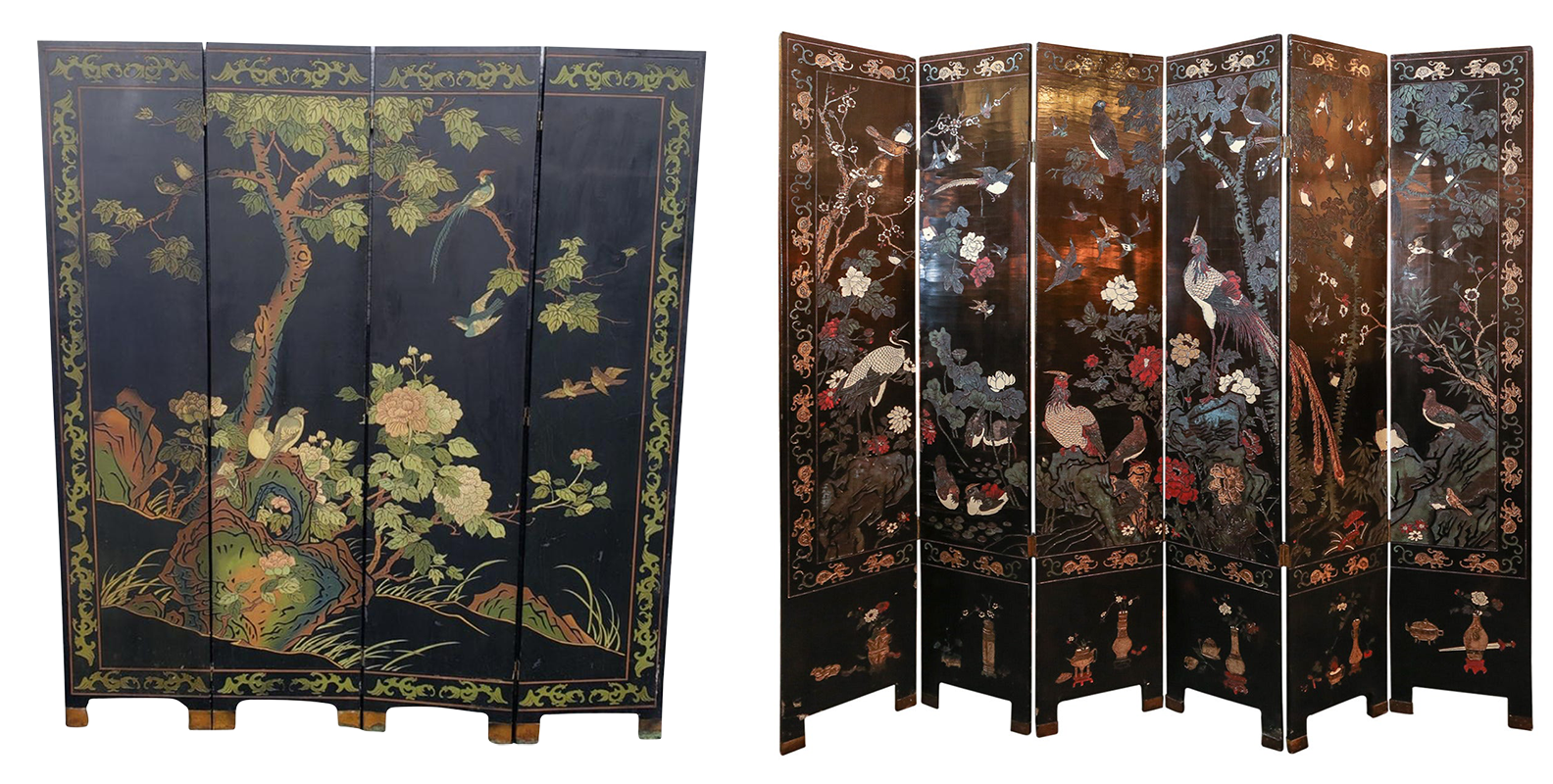 (image from chairish.com and 1stdibs.com)
(image from chairish.com and 1stdibs.com)
The original Fairy Peach Blossom powder (not the peacock-embossed Dai version) is inspired by the ancient Silk Road, a network of trade routes connecting China to the Middle East and Europe. As robbers were common, traders often banded together in large caravans with their camels and other pack animals.
Now let's look at the lipsticks. Some of them feature embossed dragons, phoenixes, azalea, and peony patterns, all of which are deeply symbolic in Chinese culture.
But some of the designs tell a more specific story. The Porcelain lipstick is a tribute to the Ding kilns, which produced beautiful white glazed ceramics for many centuries. According to this site, the kilns were "built during the late Tang Dynasty (618-907), flourished in the Northern Song Dynasty (960-1127) and declined in the Yuan Dynasty (1271-1368)". The sites of the kilns were lost until about 1934 and finally excavated in the early 1960s. Florasis decorated the lipstick case with lotus petals, which resemble ones found on some plates produced by the Ding kilns, and sculpted the lipstick itself with images of kiln workers (I think?)
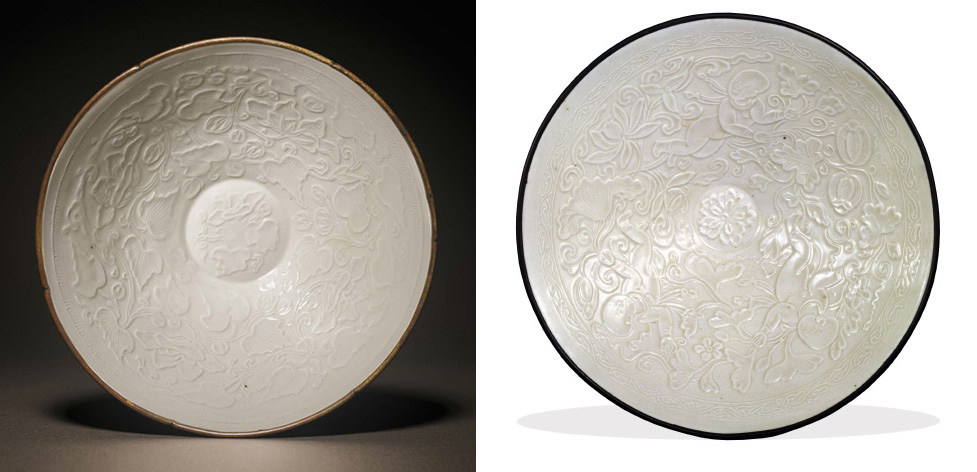 (images from bmimages.com and alaintruong.com)
(images from bmimages.com and alaintruong.com)
This lipstick depicts the legend of the white snake. While the story circulated during the Tang Dynasty (618-907 CE), the first written version did not appear until the early 17th century and there have been many alternate versions. I'm greatly oversimplifying here, but basically the myth describes a shape-shifting white snake who assumes human form under the name of Bai Su Zhen and eventually marries a man named Xu Xian. He discovers her true form years later but they remain in love. Bai gives birth to their son, Xu Mengjiao, but is then imprisoned in a pagoda by her long-time enemy Fa Hai (another shape-shifter between tortoise and man.) Twenty years later, Bai is freed by her friend and fellow snake lady Xiao Qing. She reunites with her husband and son. As with "All Birds Paying Homage to the Phoenix", the story has inspired countless artistic creations, including traditional and modern operas as well as a TV series. Unsurprisingly, the star of the show, Ju Jingyi, was tapped as Florasis's first celebrity endorser in 2019.
The inspiration for what Florasis calls Blooming Flowers on the Way Home is not quite as clear, but I think it might refer to a love story about Qian Liu (852-932 CE), the founder and first ruler of the Wuyue kingdom (907-978 CE), writing a love letter to his wife. Each spring Qian Liu's wife would go out of town to visit her parents for a few days. One year he penned a letter to her letting her know the flowers had bloomed and were waiting for her at home just as he was: "Flowers by the path are now in full bloom, and I’m here expecting you to come back soon" (I don't know how accurate that translation is but it makes sense).
This one is probably my favorite of the Blooming Rouge Love Lock lipsticks. The embossing shows Zhang Chang, a government official during the Han Dynasty (206 BCE-220 CE) painting his wife's eyebrows. He would do this each morning as hers were damaged in a childhood accident. Painting eyebrows became a symbol of commitment and a loving relationship.3
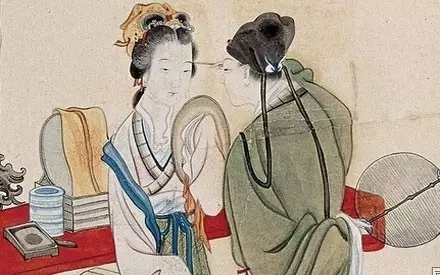
(image from lifeofguangzhou.com)
Florasis cleverly spun the traditional story to be used in a Valentine's Day promotion for their eyebrow pencils.
Finally, there's this exquisite palette, which depicts scenes from the poem "The Nymph of the Luo River". The poem was written by Cao Zhi (192-232 CE) and painted on a massive scroll originally by Gu Kaizhi (ca. 344-406 CE). In a nutshell, Cao Zhi visits the Luo river with his servants and happens upon a beautiful nymph. They have a brief and ultimately unsuccessful love affair.
I'm not entirely sure the palette reads left to right, as the original scroll painting by Kaizhi is right to left, but Florasis may have arranged it that way for Western customers. Based on the copies of Kaizhi's painting, one of which hangs in China's Palace Museum, the two panels at the bottom and the second one from the left show the horses that escorted Cao Zhi to and from the river. The light gold color is embossed with the nymph.
Towards the right of the palette, we see Cao Zhi observing and falling in love with the nymph. The far right panel I'm not sure what it could be – if the palette does indeed start on the right, then it would be Cao Zhi and his servants arriving at the river, but if it starts on the left, he would be leaving.
In any case, here are some details from Gu Kaizhi's painting.
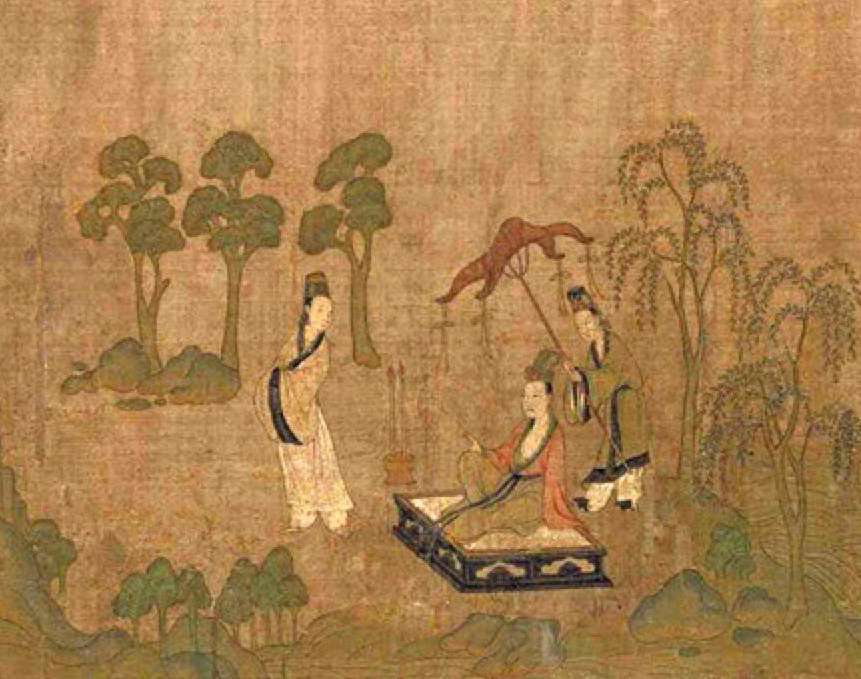
(images from eclecticlight.co)
So far Florasis's practice of highlighting traditional Chinese culture while leveraging the latest online sales tactics has proved fruitful. By 2020 sales reached approximately $442 million. That same year it was the top selling beauty brand on Douyin, an app nearly identical to TikTok. There are a few reasons for the brand's popularity. As many Western makeup buyers have not been previously exposed to many aspects of Chinese art and culture (myself included), Florasis's products represent something new and different; they go beyond stereotypes or cultural phenomena such as Lunar New Year celebrations that are now well-known in the West. Learning more about China's cultural heritage via makeup is very appealing to Western audiences. As Juliette Duveau, a co-founder of the marketing consultancy The Chinese Pulse remarks, Florasis has both "a super interesting brand identity and storytelling for Western countries."
The novelty of foreignness is the other side of the same coin for Chinese customers. Florasis is proving popular there as well precisely because the culture is familiar. The various artistic traditions and folklore are things they grew up with and are a source of comfort and national pride, particularly as the appetite for guochao in China (literally "national trend") grew in 2020. "Part of the wave Florasis has caught is a resurgence in reverie for culturally Chinese brands and products…sentimental resonance has been cast inward by many Chinese consumers and accelerated in a post-pandemic landscape in need and want of a little more local," writes Alixanne Hucker for The Challenger Project.
Another reason for Florasis's success is the relatively small product range and price point. While it can't be categorized as affordable, it's not a luxury line either. The product range is small compared to other brands, many of which seem to churn out new collabs and collections each week. The overall effect helps shed the "made in China" stigma of cheap, poorly made goods and delivers quality products at a reasonable price.
Finally, packaging is key to Florasis's popularity. Other C-beauty brands such as Maogeping, Zeesea and Flower Knows (stay tuned for posts on these!) incorporate eye-catching design and celebrate Chinese culture, but none have quite the level of detail of Florasis. Nor do any of them, to my knowledge, use master artisans to assist in the creation of the product designs. As one article notes, the products "have an 'instantaneous heirloom' quality about them. They sit comfortably in opposition to the Western giants that have previously dominated the market, and the wider category’s fixation on functionality."
I have two slight critiques of Florasis. First, I would like to see more of the proceeds being diverted to organizations that support the cultural heritage of China. Their website states, "We proudly sponsor activities in disaster relief, poverty assistance, female empowerment, and intangible cultural heritage to create value for society." The only evidence of their "social responsibility" I could find was the donation of 1 million yuan (roughly $150,000) to the Wuhan Charity Foundation in 2019, and the launch of the Miao Girls' Educational Assistance Program, a charity project run in conjunction with the China Foundation for Poverty Alleviation (but I can't find any solid proof of as it was only mentioned in one article). While these initiatives are certainly better than nothing, it would be great if they did this for all their products, such as giving a portion of the profits from the Impression of Dai collection to an organization that helps the Dai people. If a Chinese brand (or any brand, for that matter) is going to profit off of a particular culture, even if it's one's own, they need to do their part in giving back to that community.
Second, as with most C-beauty, K-beauty and J-beauty brands, Florasis needs to greatly expand their base shade range if they want to be more fully accepted in Western markets, especially in the U.S. Explains one consulting firm: "While many Westerners do enjoy the design and aesthetic of Florasis packaging, the skin tones and the color preferences are different. China’s beauty preferences are reflective of the homogeneous society whereas the West has much more diversity. Westerners are used to beauty brands that increasingly cater to a wide variety of skin tones, which means Chinese beauty brands [that] enter the West will need to adapt to the diverse preferences." Not only is a comprehensive shade range necessary to profit in the U.S., it's important from an optics standpoint. Any brand that doesn't participate in this, even if they don't believe their main market requires a vast shade range, is generally not perceived as diverse by conscious consumers in the U.S.
What's your favorite object here? I love all but my favorite is probably the lipstick portraying Zhang and his wife. It's too perfect for a Chinese heritage-focused makeup line!
1The name was inspired by one of the "four great beauties" of ancient China, Xi Shi, as described by poet Su Dongpo (Su Shi).
2There's a whole book on Miao embroidery if you're keen!
3For information on eyebrow styles and makeup more generally throughout the Tang Dynasty, this paper was great.


